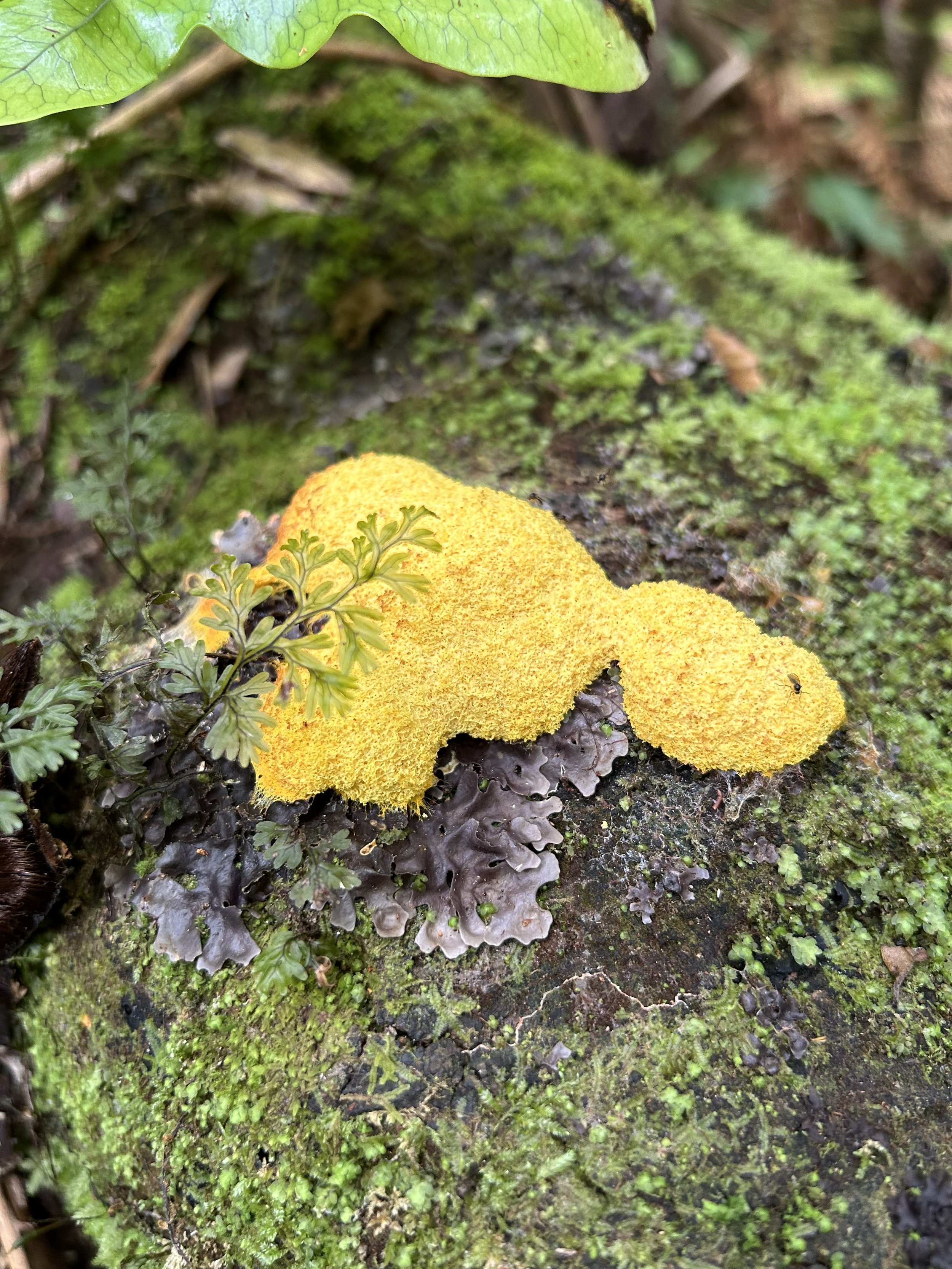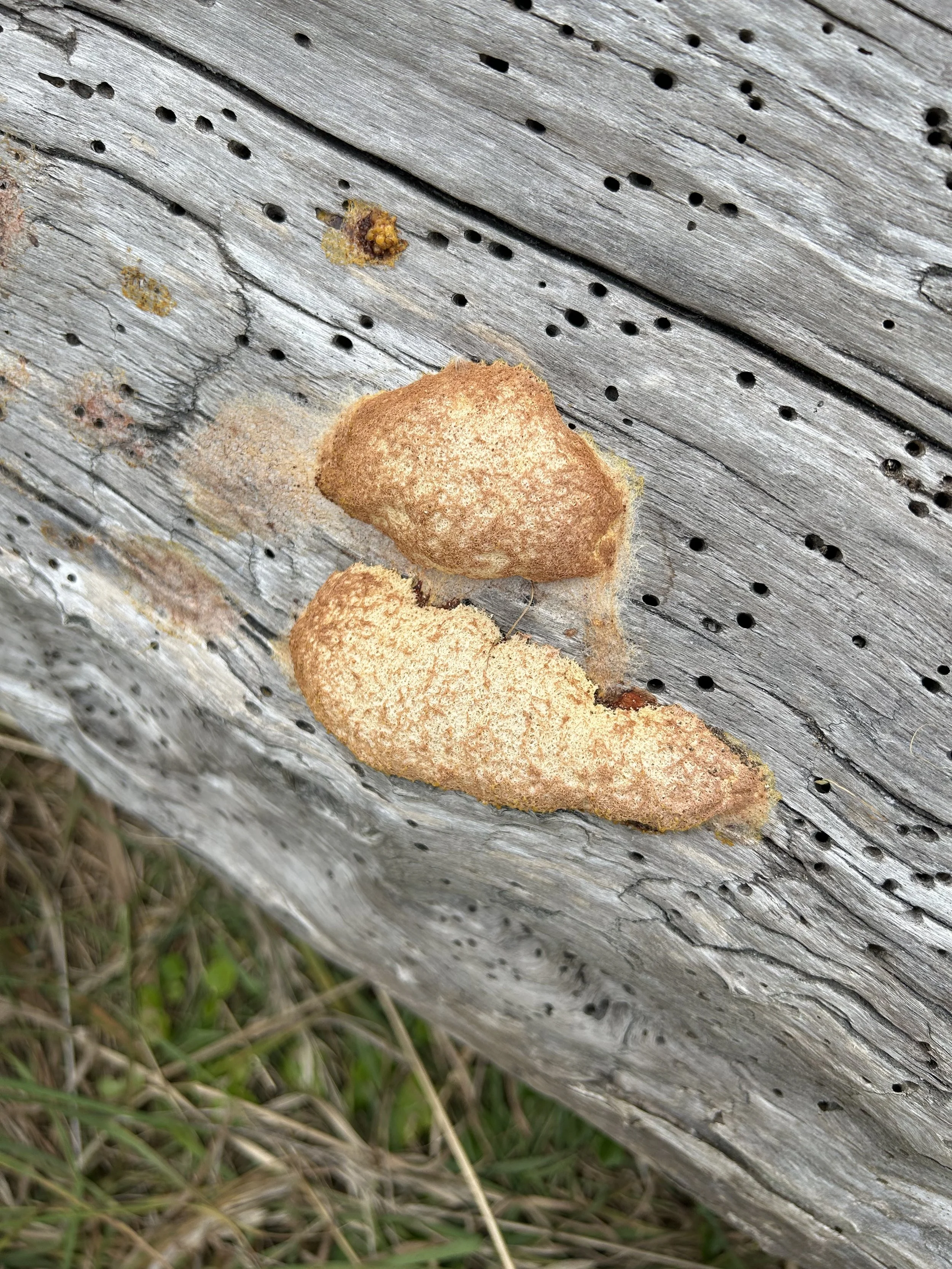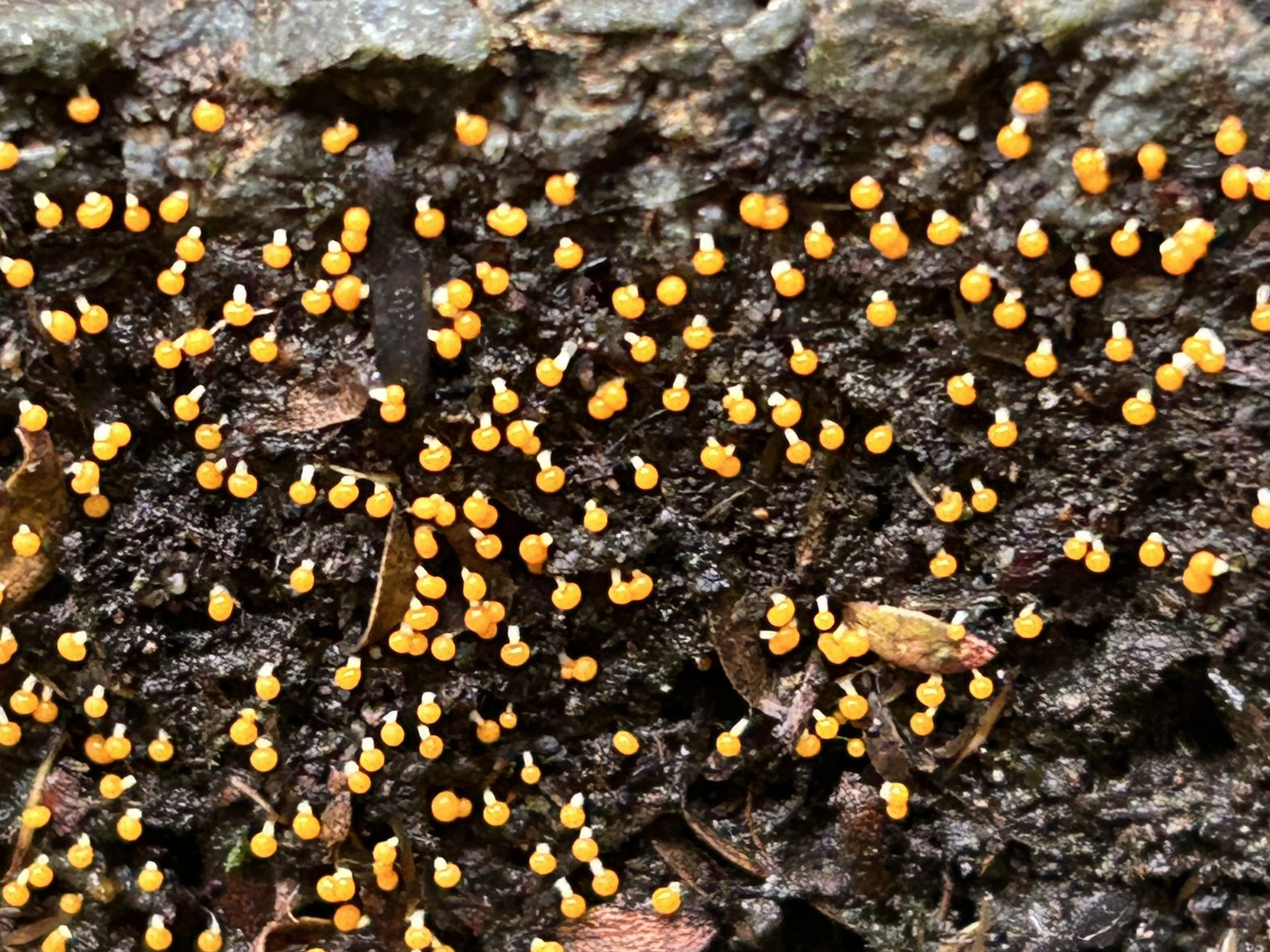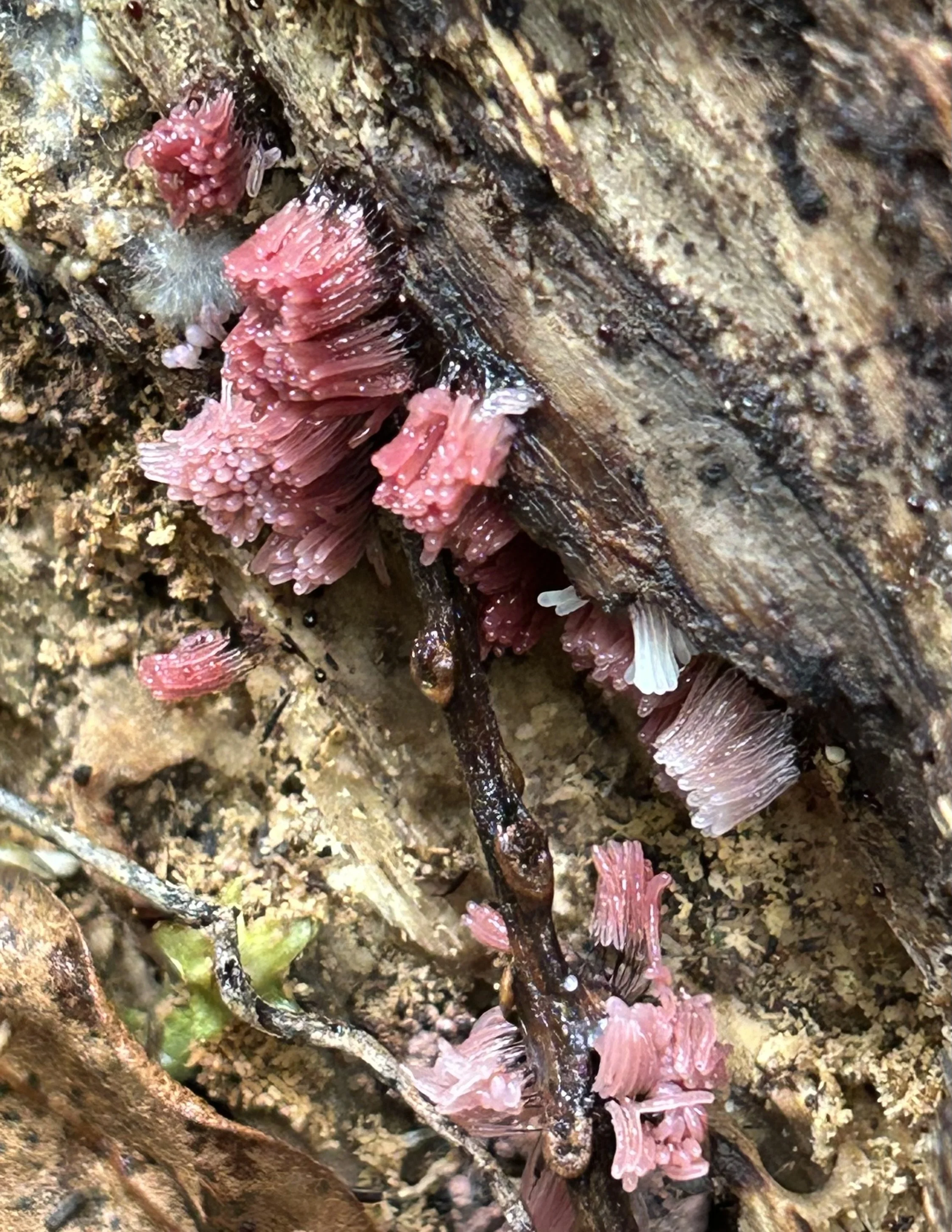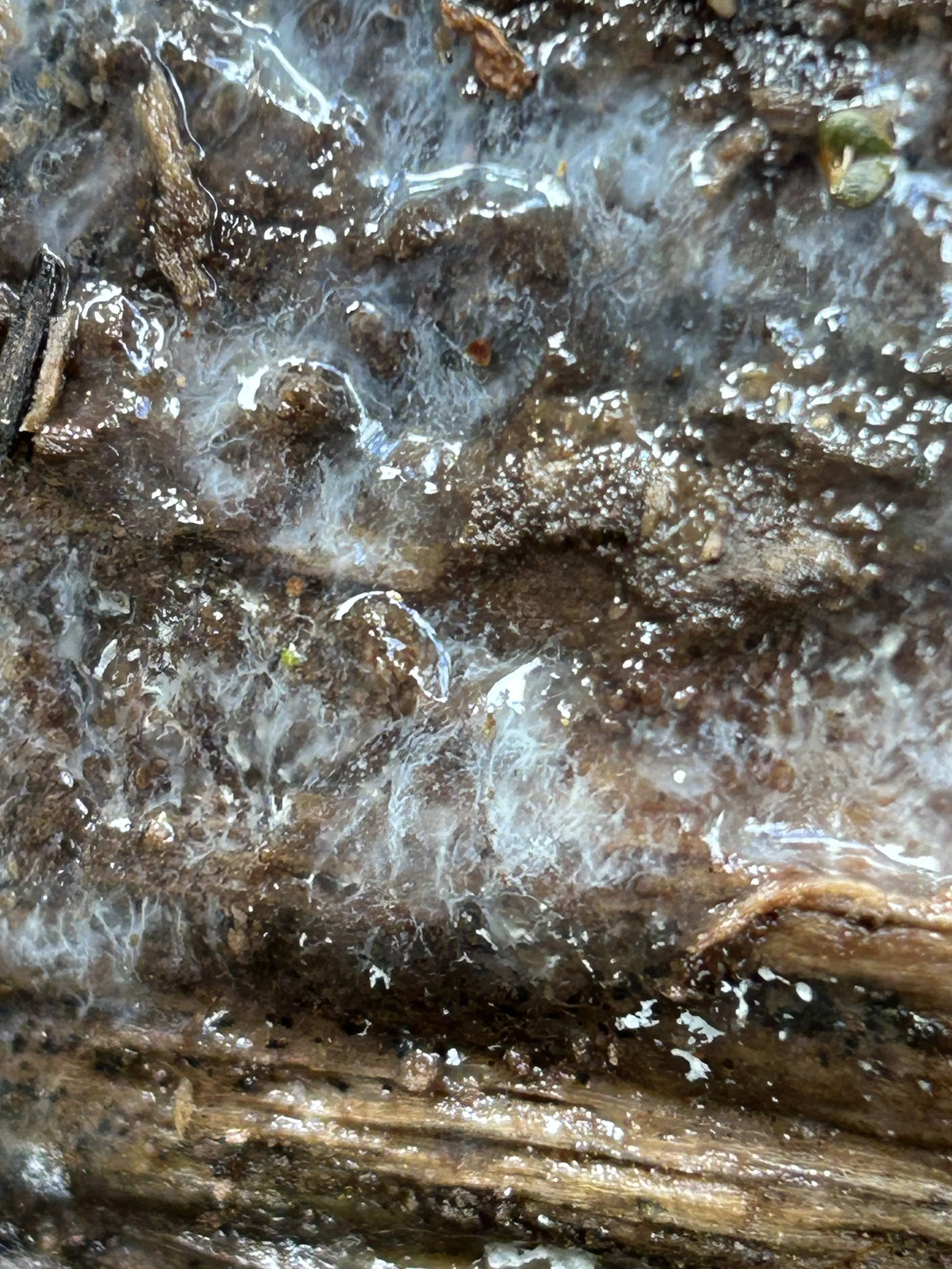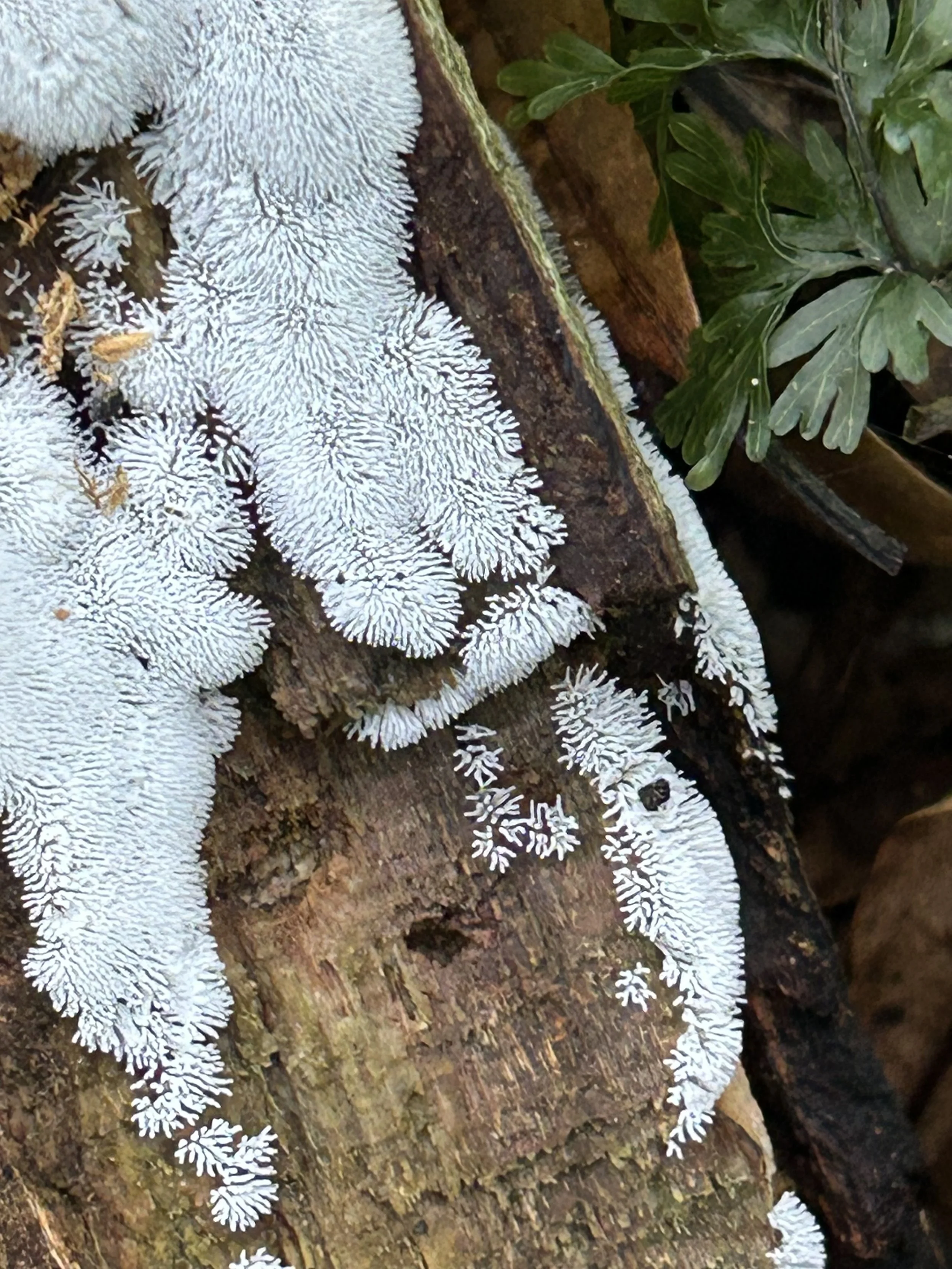Meet the Slime Moulds
The first slime mould I was introduced to was the aptly named and dramatic looking Dog Vomit slime mould.
Fuligo septica Dog vomit slime mould often appears on rotting logs or wood chip piles in warm weather
When I was told this fungus-looking blob could move, I was astonished. But then as I learned more it appeared that slime moulds are quite extraordinary beings.
First, slime moulds are not fungi and are not actually mould.
There are several types of slime moulds. The ones we can see with the naked eye are Myxomycetes or acellular slime moulds. They can change form and shape quite rapidly; from being single cell organisms, which we can’t see, to combining with others to form a plasmodium that feeds on bacteria, fungi and algae. It then forms fruiting bodies and reproduces.
To learn more read or listen to the experts, see notes at the end of this post.
Above are photos of later stages of Fuligo septica. The left photo was taken just two days after the one at the top of this blog, showing it developing a crust.. The right photo is another older F. septica that has lost its colour.
Once I’d seen one slime mould I was curious to look for more. As they seemed to be rarely seen, each sighting caused some excitement. But I realised, like many things in nature, once you know what to look for they seem a lot less rare!
Some slime moulds fruiting bodies look like hordes of tiny mushrooms. The one above which I found in my garden is Nannengaella mellea.
I’ve seen Chocolate Tube slime moulds almost as often as Dog Vomit slime mould. There are several species in the genus Stemonitis. Here are two at different stages. I observed the ‘tubes’ in the left picture changing from white to pink to brown over about an hour. They were barely over 1 cm in height. The right image was much larger, possibly a different species, and presumably at a later stage.
Above are different stages of Common Coral Slime Ceratiomyxa fruticulosa seen on different parts of the same rotting stump.
Common Coral slime Ceratiomyxa fruticulosa
NOTES
To learn more about slime moulds I bought Where the Slime Mould Creeps by Sarah Lloyd, a naturalist living in Tasmania whose Instagram feed I’d been following for some time. The book helped unlock the mysteries of slime mould a little and introduced me to other slime moulds that one might see in New Zealand too.
Podcasts are a great way to learn more about a field that is still emerging. For example:
With thanks to Ian Goodwin who introduced me to slime moulds.

